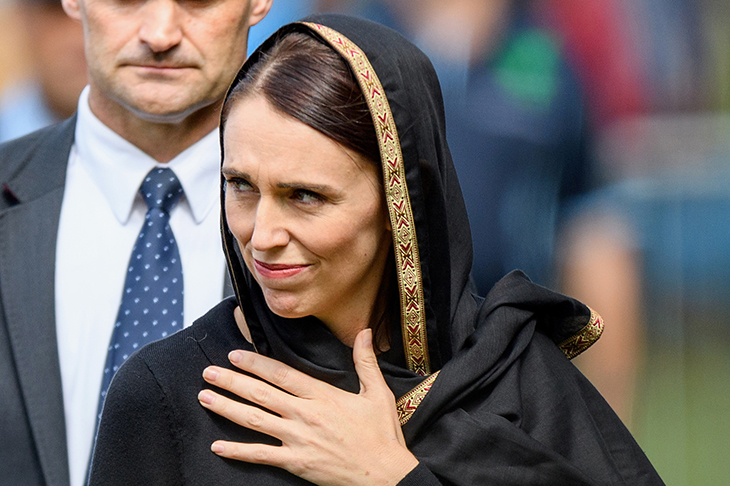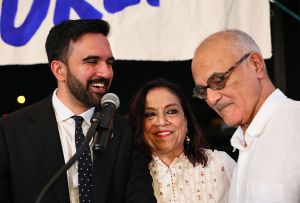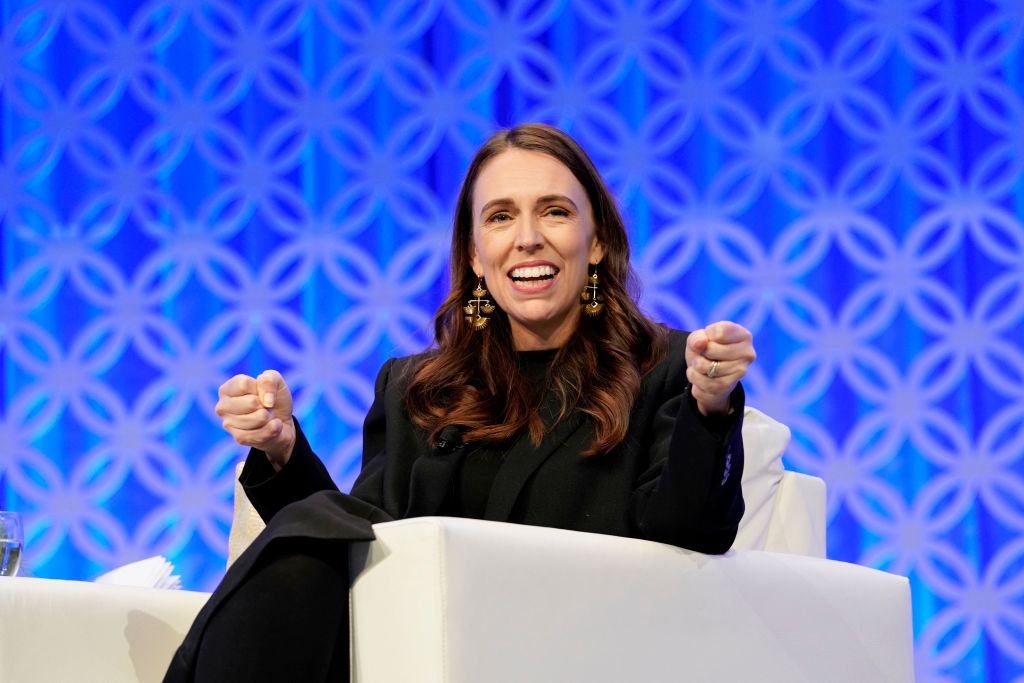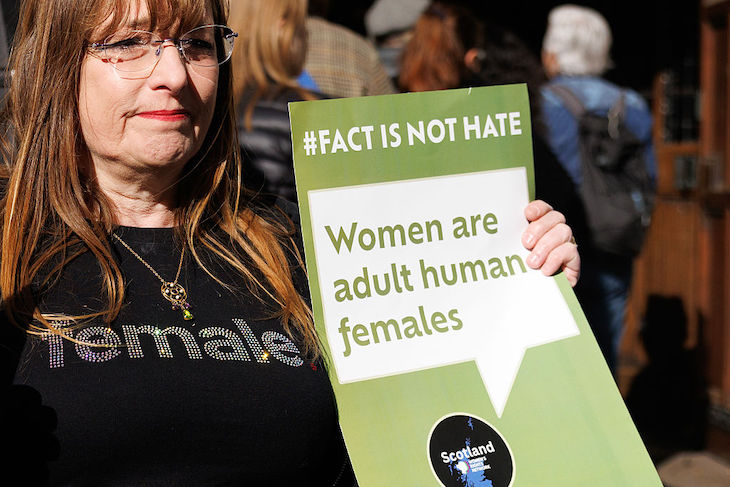The reaction of New Zealand’s vast non-Muslim majority to the terrorist attack at the Al Noor mosque in Christchurch is both inspiring and alarming. Inspiring because, faced with a group of mostly recent arrivals who constitute a mere 1 percent of New Zealand’s population, the other 99 percent have chosen not to ignore their loss and distress, but to commiserate and console at a time when liberal democracies are beset by factional resentments. What is alarming is the form the reaction has taken.
When New Zealand’s prime minister Jacinda Ardern observed Friday prayers in the park outside the mosque, she and many other non-Muslim women wore a hijab. They were not in the gender-segregated prayer area reserved for women, where covering their hair would have been politely insisted upon, and courtesy would have required compliance. They did this voluntarily — to express fellow feeling, rather than to avoid arousing Muslim men.
Ardern’s choice of headwear was a political statement. So was broadcasting the call to prayer over state television and radio. So was the unfounded claim from Gamal Fouda, imam of the Al Noor mosque, that the massacre was ‘the result of the anti-Islamic and anti-Muslim rhetoric by some political leaders, some media agencies, and others’. So was the foolishly repressive banning of the shooter’s ‘manifesto’ by the New Zealand censor, presumably under pressure from Ardern’s Labour party. So was the downright ridiculous response of Whitcoull’s, a New Zealand bookstore chain, to ban Jordan Peterson’s self-help manuals. These are not the reactions of thoughtful leaders. They are panic reactions, seeking political gain or shelter from as-yet hypothetical consequences.
It is good that Ardern has ‘stood with’ New Zealand’s Muslims in a display of simple decency. But the message sent by her hijab, and those of the other non-Muslim women, is politically confused — and an admission of unconscious bigotry.
‘In my simple worldview, if you believe in equality, you should be a feminist,’ Ardern wrote in 2015. On Friday, Gamal Fouda thanked Ardern and the non-Muslim women for ‘honoring us with a simple scarf’. But there is nothing simple about a scarf in this context.
In Muslim-majority societies where family honor is everything, the presence of the hijab is a barometer of the status of women. Where the hijab is the marker of Muslim female identity, women are subjugated to custom over free expression, to discriminatory clerical law over equality before secular law, and to male authority over a woman’s right to choose.
In the liberal democratic states into which large numbers of Muslims have recently immigrated, the hijab is second only to the niqab, the face cover, as a symbol of the subjugation of women, and the political assertion of Islam in secular societies. If an elected female prime minister chooses to signal her virtue by wearing a hijab outside a Muslim prayer space, she will appear to be endorsing the hijab as the official and correct public costume of Muslim women, regardless of what they might think, and regardless of what it costs them. Especially if she is a self-professed feminist.
‘It is a symbol of purity culture antithetical to feminist values,’ the Muslim reform campaigner Asra Nomani tweeted at Ardern on Friday. ‘We have women in jail and dead, for refusing the interpretation of Islam you promote.’
The New Zealand Muslim Association and the Islamic Women’s Council of New Zealand promoted the idea that non-Muslim New Zealanders should ‘stand with’ New Zealand’s Muslims by covering their hair. The suggestion, however, came from Dr Thaya Ashman of Auckland. after she had seen a news item in which a New Zealand Muslim woman said she was now afraid to go outside in her hijab.
Ashman, apart from being a doctor, is also a vicar’s wife and occasional preacher. She has volunteered for an NGO in Afghanistan, where women are afraid for their lives if they go outside without a hijab. There was a time when a vicar’s wife might have advised her fellow Christians to pray for their Muslim neighbors, and then to respond with charity, like the surviving congregants of the Tree of Life synagogue in Pittsburgh, who have reciprocated the crowd-funded generosity of their Muslim neighbors by sending more than $50,000 to Al Noor.
Ashman might have called on non-Muslims to make the small gestures of fellow-feeling on which genuine relations are built between religious and ethnic communities. Instead, she practiced what liberal-minded Christians tend to preach these days, a woozy and theatrical religion of humanity. Of course, it took off on Twitter, where no gesture of sanctimony is too fatuous to make. Soon, hordes of young non-Muslim women were posting hijabi selfies under the tag #HeadscarfForHarmony.
Australians did the same in December 2014 when a self-starting ISIS adherent held a Sydney café hostage and two customers were killed. After an Australian Muslim woman was insulted on a bus, the #IllRideWithYou hashtag became the way to signal amity. The enemy is no longer the ideologically motivated terrorism of a minority within a minority, but a diffused intolerance, the purported racism of the majority among the majority.
A female Muslim New Zealander, writing anonymously, called the #HeadscarfForHarmony fad ‘cheap tokenism… ‘a gimmick and pretty distasteful’: ‘Most people will remove their scarves when Friday ends whilst my mother and sisters continue to be abused — as it’s their religious outfit and not a costume.’ The fact that she had to write anonymously confirms her case.
The Christchurch attack is the first mass casualty terrorist event in New Zealand’s history. The frenzied extent of the messaging — the newsreaders speaking Arabic, the armed policewoman in a hijab, the #HeadscarfForHarmony mania — smacks of terror — the feeling, not the act. For the power and purpose of terrorism is to inculcate fear by random violence. And it is only human to wish to ward that off, whether by surrender or resistance.
The world is terrified of Islamist violence. In that sense, if no other, the Islamist-approved term ‘Islamophobia’ is accurate. Imam Fouda rightly observed that the Al Noor attack ‘did not come overnight’. It comes after a long global wave of Islamist terrorism, most of whose victims have been Muslims. And some of that violence has incited its despicable twin, the terrorism of the minority within the majority, into a dance of death.
New Zealanders sense that even their distant society has been drawn into the dialectic of religious murder. Of course, Islamists will retaliate: that is the nature of terrorism. The hijabs, the selfies, and the invocation of Arabic phrases are all what the anthropologists call apotropaic magic, an unconscious attempt to ward off the coming evil.
In Greece and Turkey, the eye of the ‘evil eye’ amulet is blue because it is blue-eyed people who, inadvertently or not, are believed to carry the evil. One theory has it that this is a folk memory of violent, blue-eyed invaders like the Crusaders. Today, non-Muslim New Zealanders are propitiating their fear of the coming evil with a similar outburst of collective primitivism.
As with the hanging of evil eye amulets that face outwards, or the strategic placement of mirrors which serve similar magical thoughts, Ardern and the selfie-takers are trying to protect themselves by reflecting their image of terror back to itself. This, more than their consciously contrived theatricals of affection and sympathy, shows what they really think of Islam and Muslims.

























